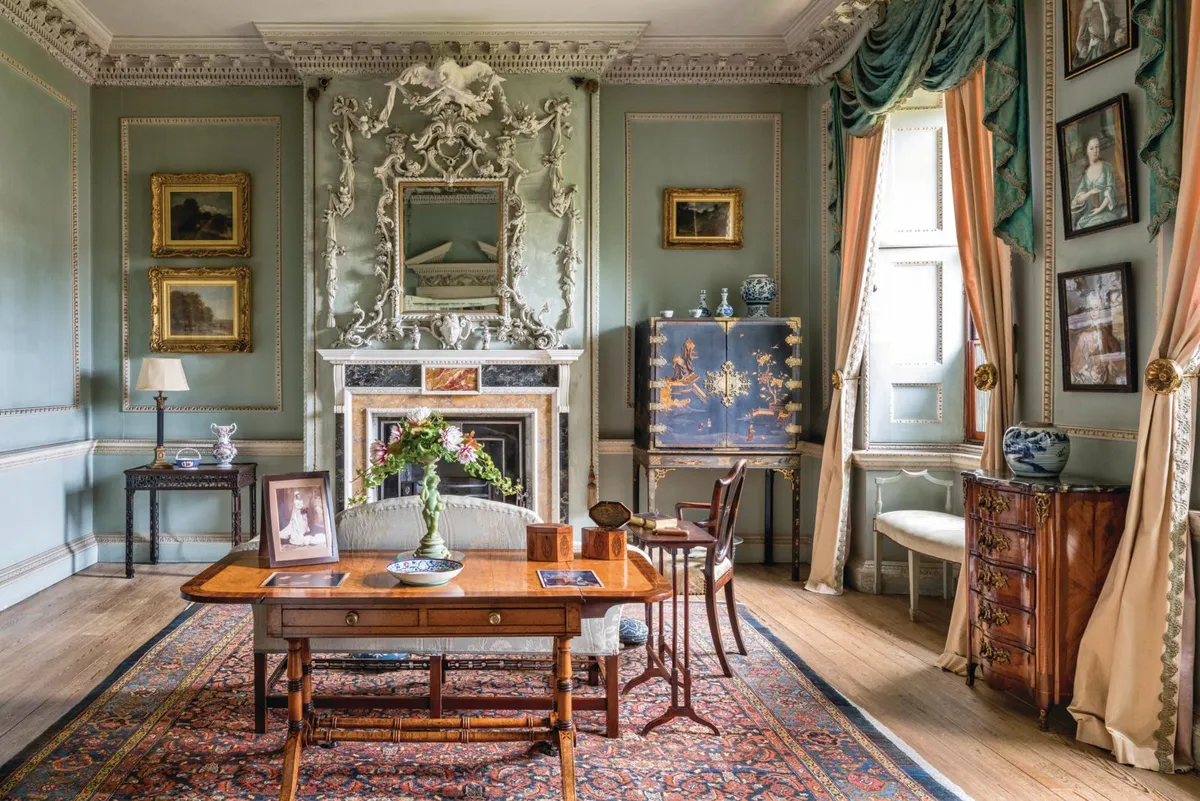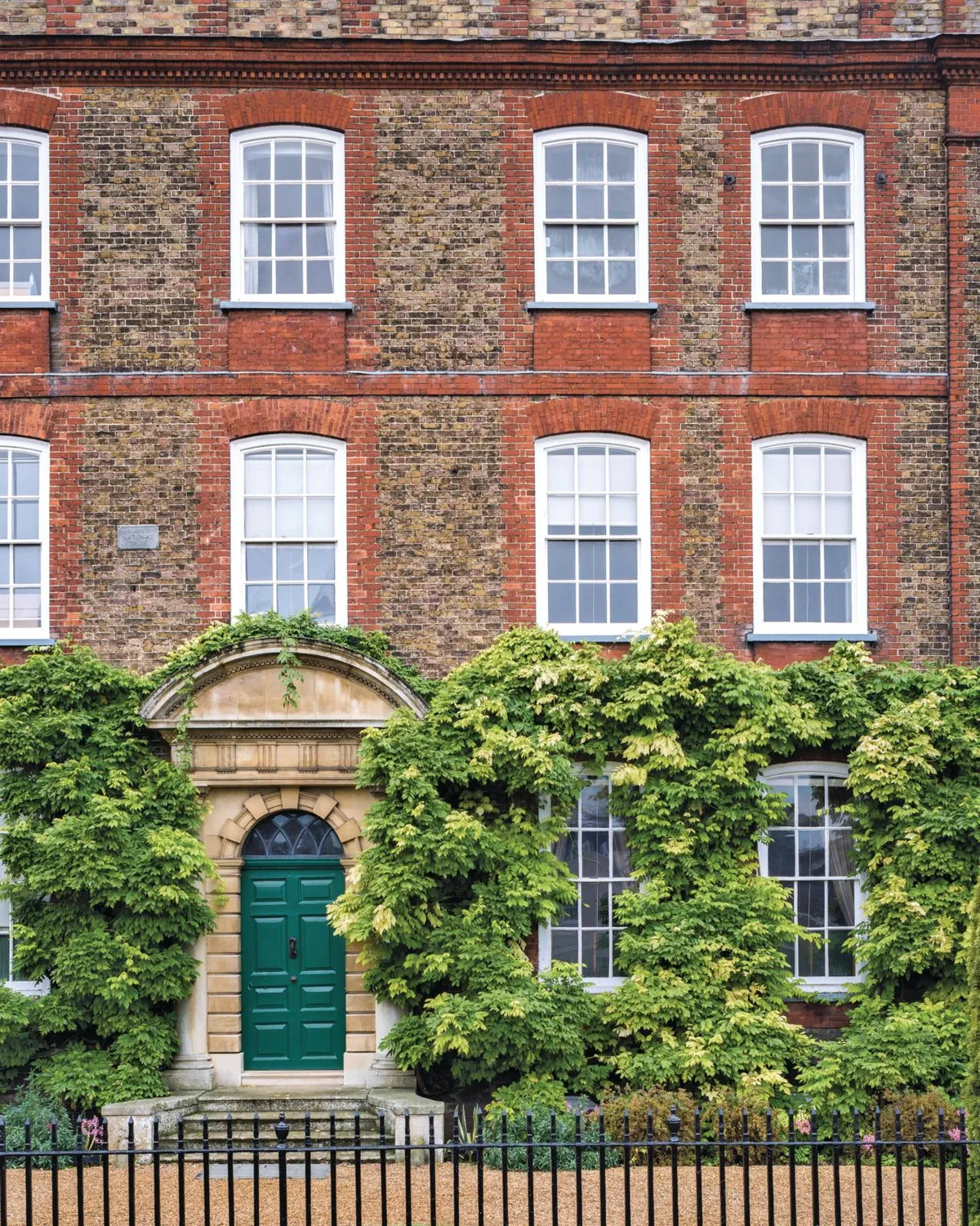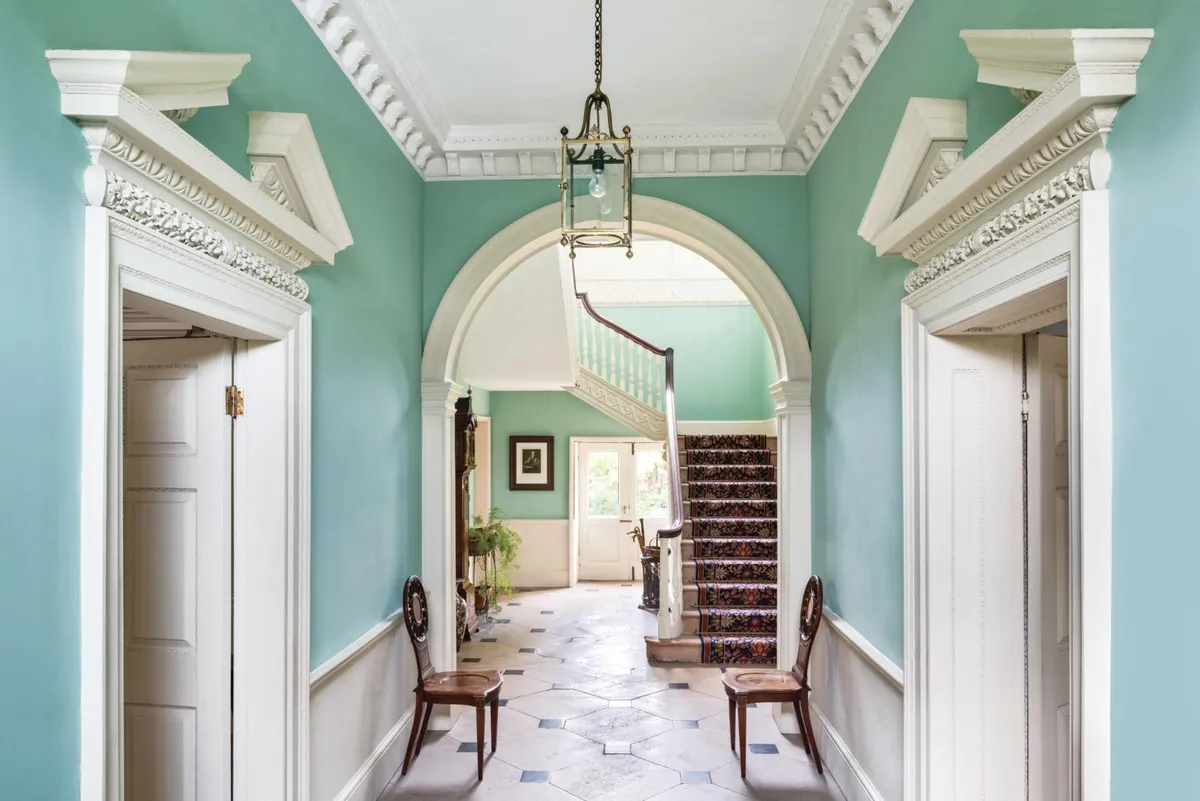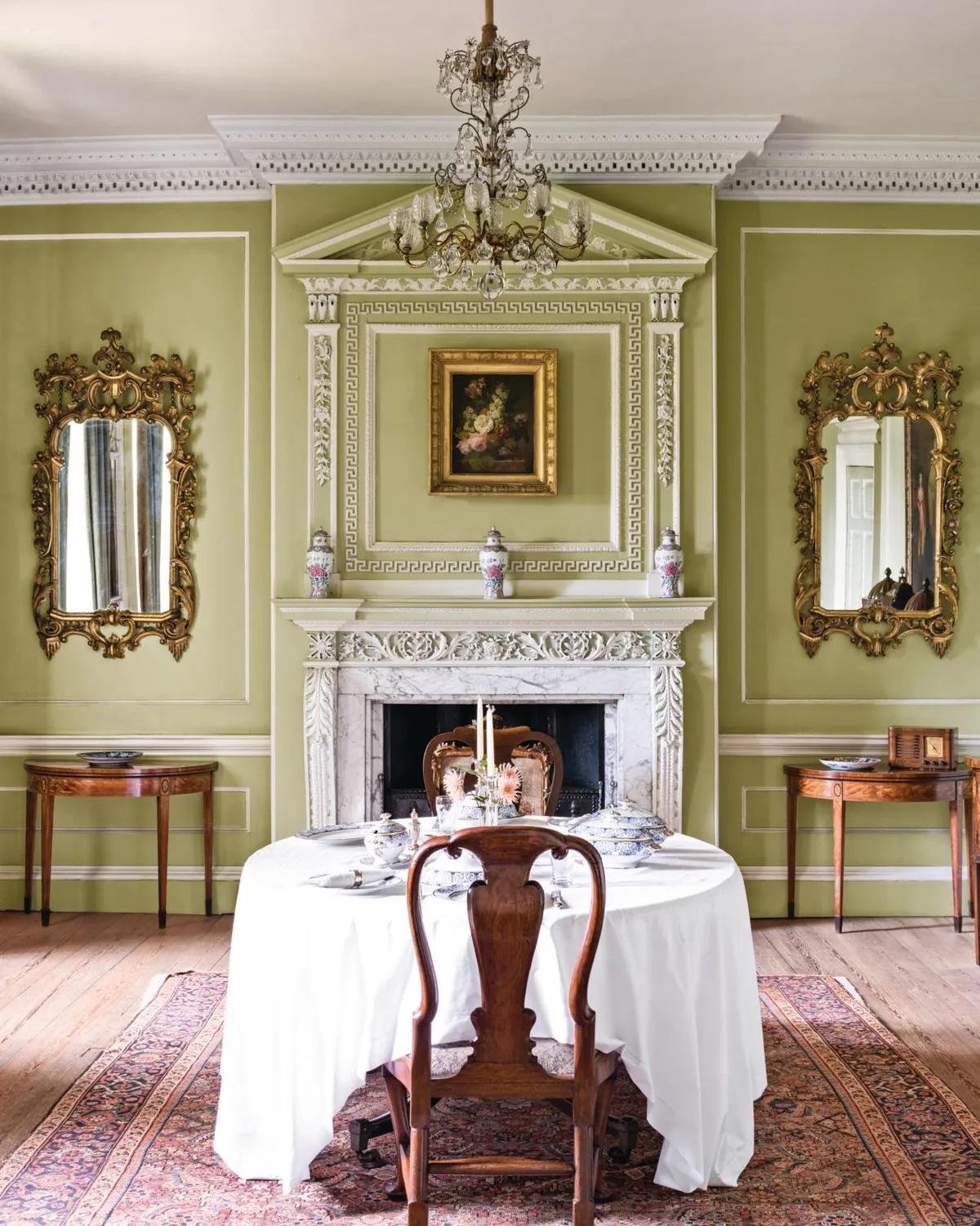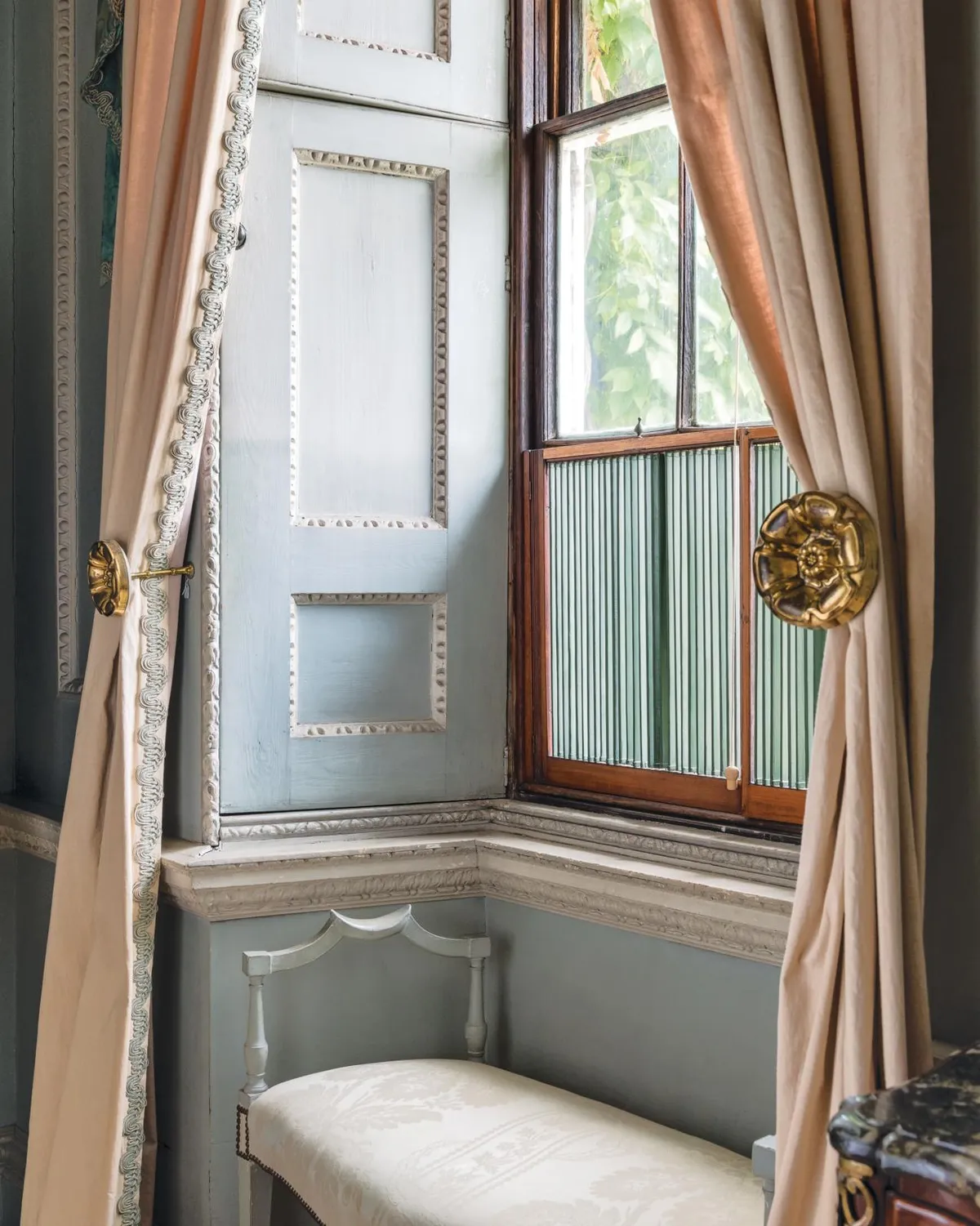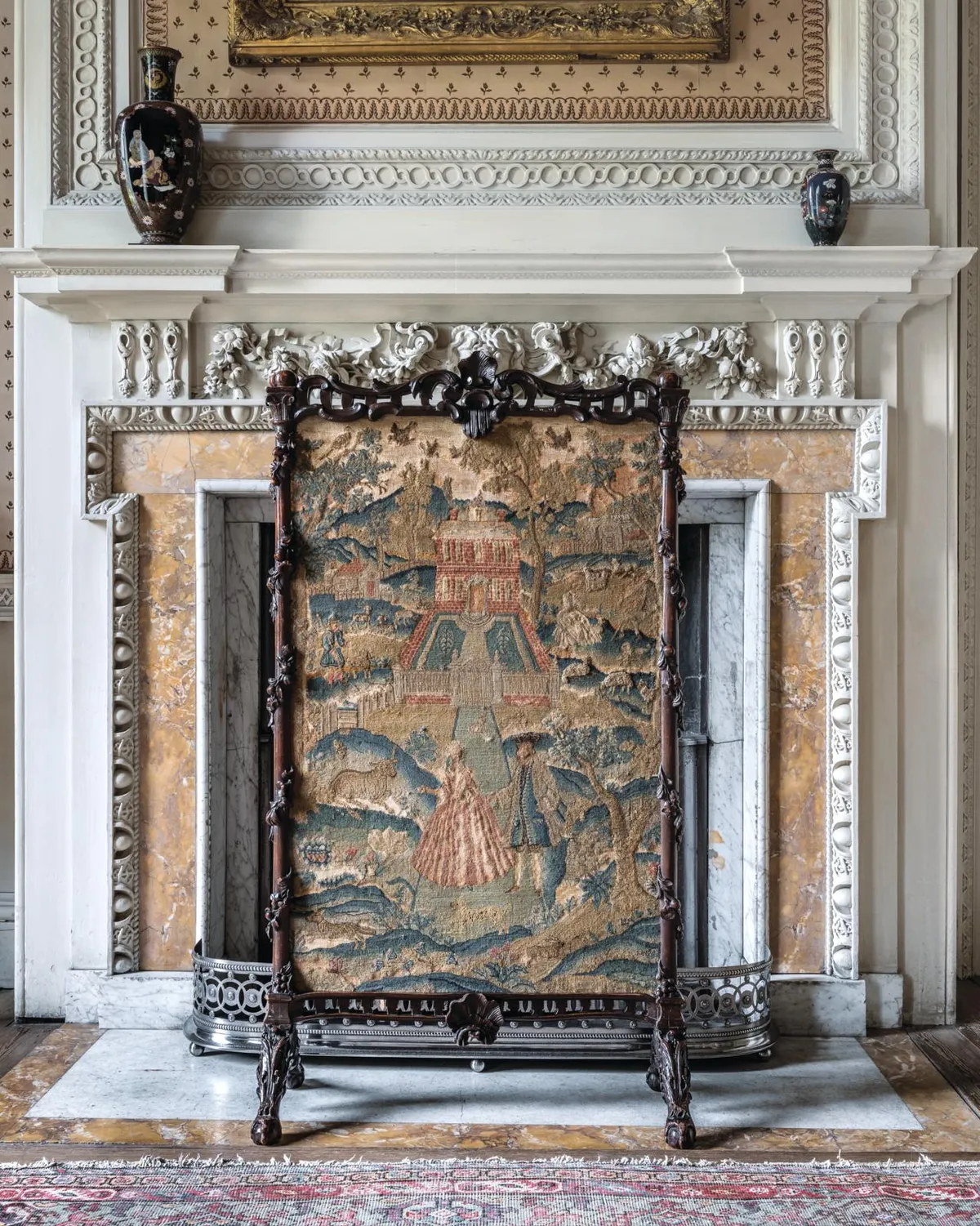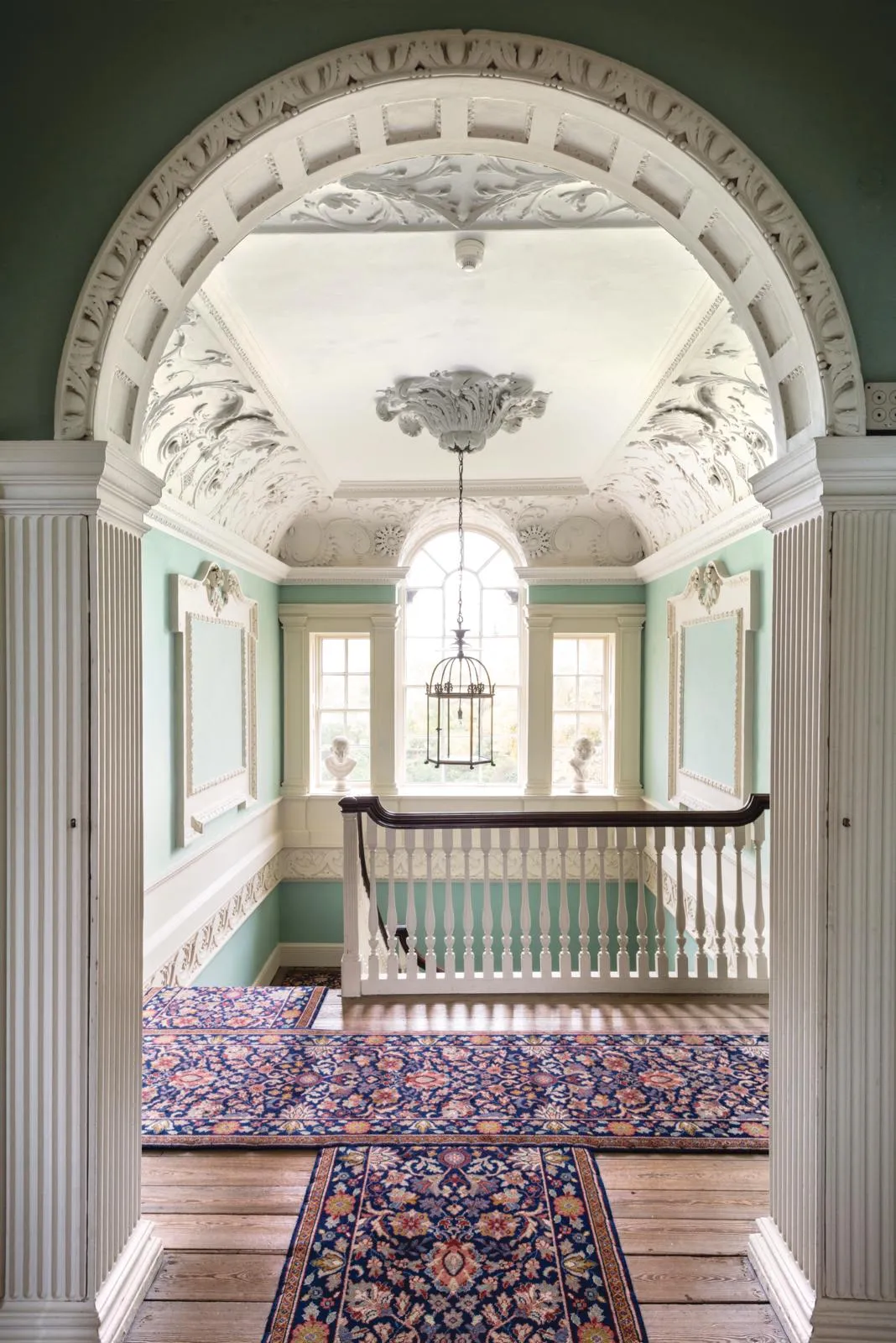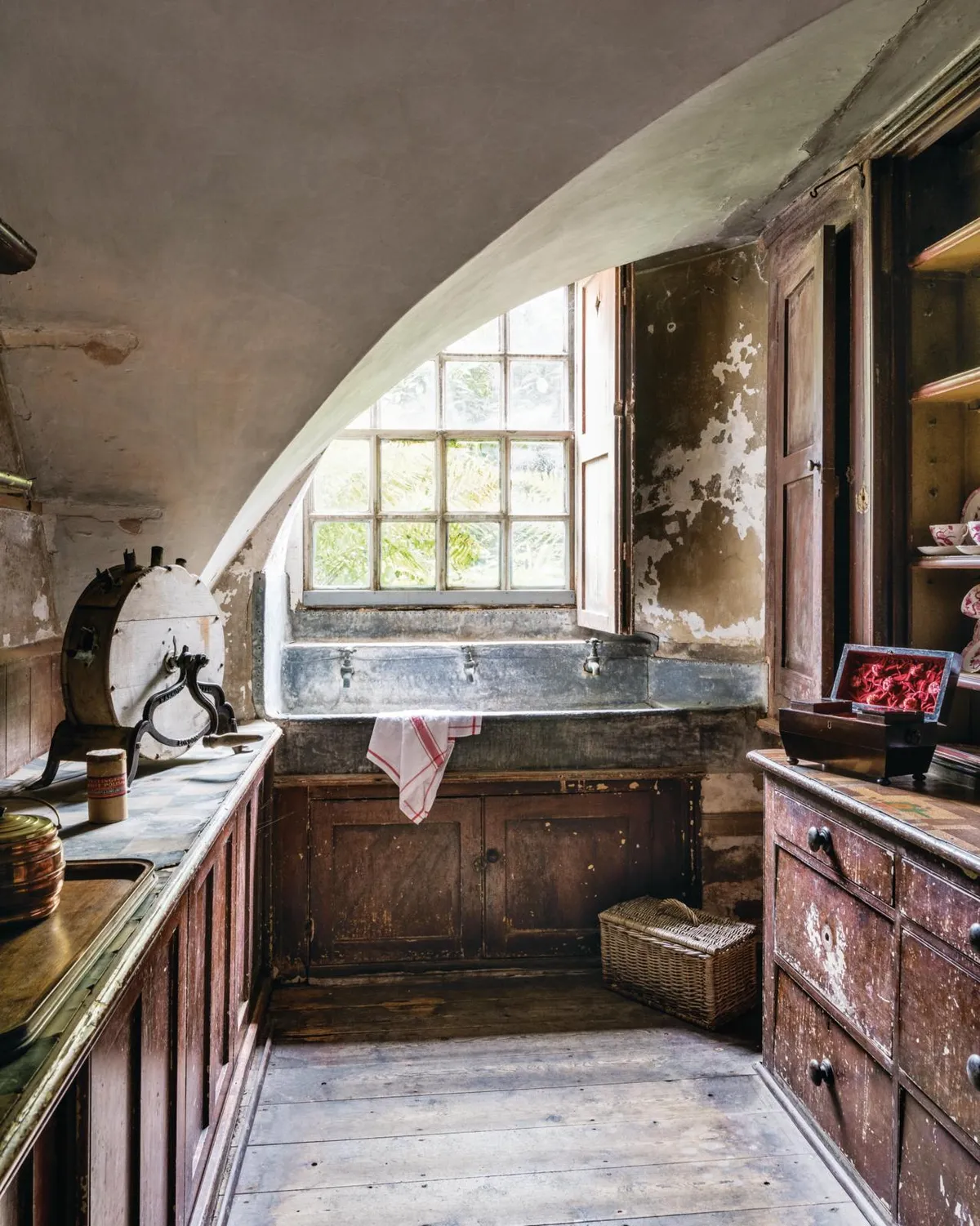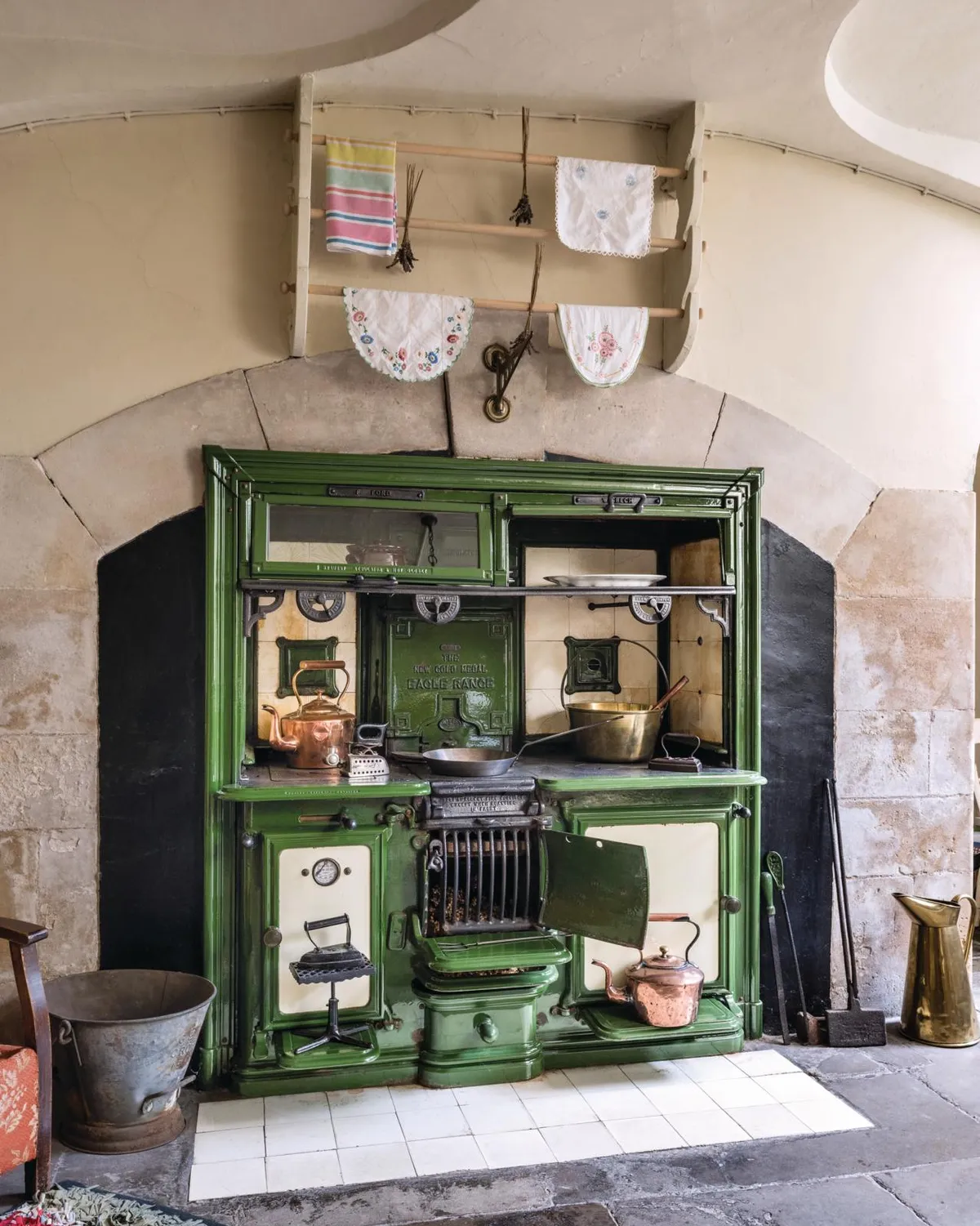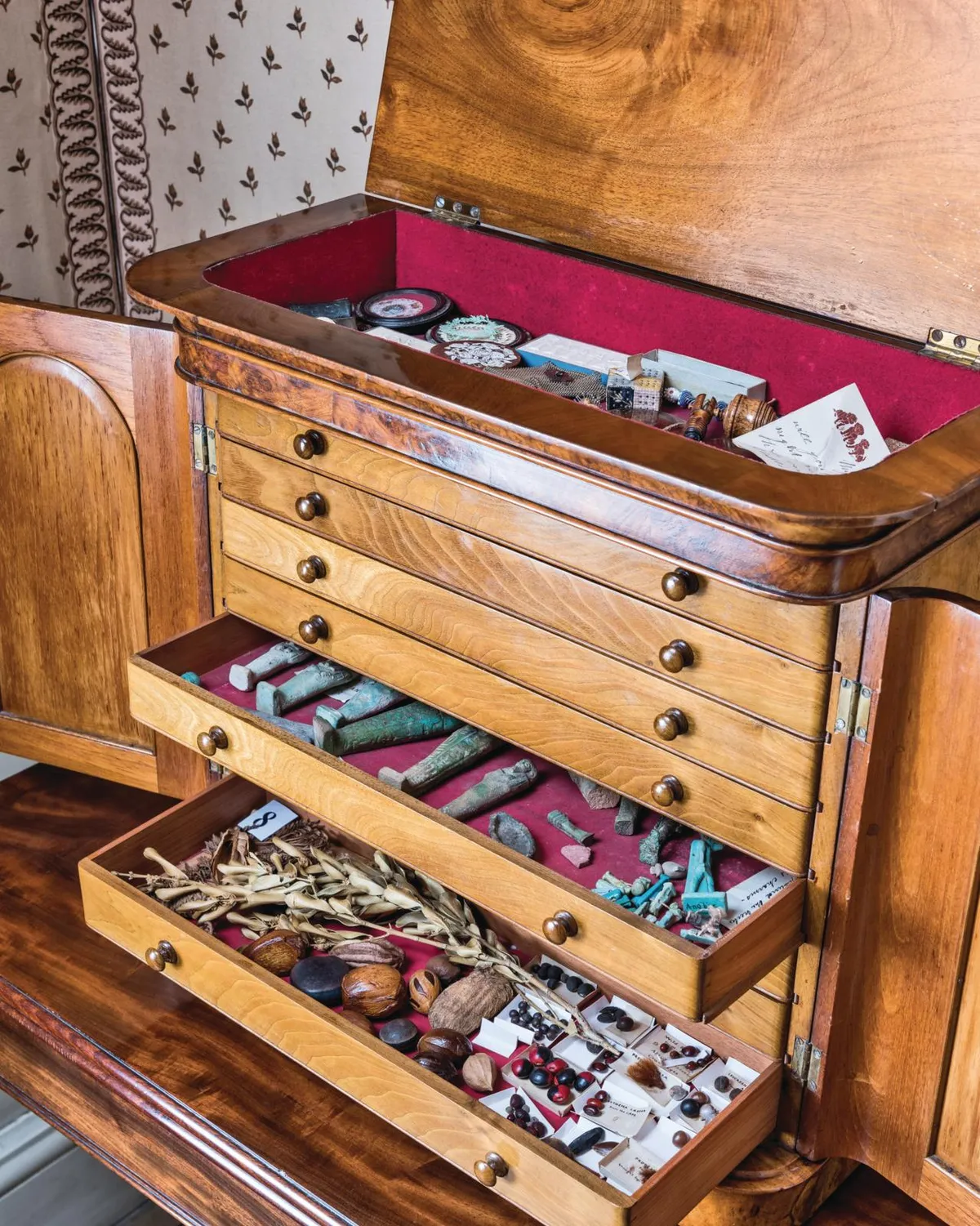Ah, the Georgian era: lavish balls, elegant Palladian houses and swathes of silks, satins and brocades decorating the well-heeled and their homes. One can quite imagine such opulent scenes in Cambridgeshire’s Peckover House in the prosperous port town of Wisbech.
The house is typically Georgian – perfectly symmetrical, red brick and sporting a partially Wisteria-clad exterior. Inside it is equally impressive – all rococo mouldings, elaborate plasterwork and mahogany.
Its previous inhabitants aren’t perhaps what you might expect of this fashionable house – this isn’t a tale of 18th-century soirées and social climbing. ‘The Peckovers – who occupied the house from the 1790s to the 1940s – were an unusual family,’ says Ben Rickett, house and visitor services manager at the house.
‘They were a contradiction – Quakers who ran a bank and were wealthy. Yet despite their success they chose to spend their money on the town, helping fund the Wisbech & Fenland Museum and donating to local schools and the hospital.’ In short, the Peckovers were more likely to be found reading in their extensive library than living the high life.
The house was built c1722, 70 years before the Peckovers moved in. The architect behind the design is unknown but it’s believed that a bricklayer or joiner built it, using – remarkably – an instruction manual. ‘There were plenty of these books for house building around at the time,’ says Rickett. ‘They were the DIY manuals of the Georgian period.’
Throughout the house are little quirks (window seats lift to reveal cupboards and small shelves for candles are tucked behind shutters) which show that whoever was behind it, knew what they were doing.
You might also like Inside Shilstone House, a Georgian manor house in Devon
The first generation of Peckovers to move in were Jonathan and his wife Susanna. Jonathan had been a greengrocer and draper but found that local townspeople began to trust him to look after their money.
He started with a small safe but, after moving to Peckover House in 1794, built a wing onto the property to house a bank, which would later be managed by the next three generations of Peckovers. The Wisbech and Lincolnshire Bank became one of the first in the town and, in 1896, merged with 19 other banks into the Barclays partnership.
So how does this seemingly quiet and industrious way of life fit with such a glamorous home? ‘Before the National Trust acquired the house in 1948, its whole contents had been auctioned in a two-day sale. And when it first came to the Trust, the day-to-day running was initially handled by the Wisbech Society.
A woman nicknamed ‘Georgian Doris’ was responsible for furnishing the house with pieces from her favourite period, the Georgian era,’ says Rickett. ‘Lots of pieces that we see here today came from other Trust properties and don’t accurately portray how the house would have appeared in the Peckovers’ time.’
Gradually, around 20 pieces have been reinstated, having been bought at local auctions or bequested. ‘One of my favourite pieces is the early 20th-century bentwood walking stick trug. It was used by Alexandrina Peckover – the last of the family to live in the house until her death in 1948 – to collect cuttings from the garden,’ says Rickett.
Other star pieces include the early 18th-century lacquered cabinet in the Drawing Room, a Greek catechesis that is nearly 1,000 years old and the c1860 cabinet of curiosities.
You might also like Take a look inside Claydon House
The cabinet belonged to Lord Alexander Peckover (Jonathan’s grandson) who, like the rest of his family, was held in great esteem by the locals – as well as the monarchy. In 1907 he was recognised for his services to the county and given the title Lord Lieutenant.
‘Forever modest, his one stipulation when he was made a lord was that he wouldn’t have to wear the formal court dress,’ says Rickett. ‘He and his three daughters were great travellers and filled this cabinet with pieces acquired on their trips, from shells and stamp rollers to stones.’
The biggest loss to the house was Lord Alexander’s library, which included medieval manuscripts and bibles. ‘It would have been considered one of the best in the country, if not world.’
Piecing together the history of the house, its original decor and furniture is an ongoing project for the Trust. ‘We’ve managed to map much of it using the auction catalogue from the 1948 sale, a house inventory and a couple of archive photographs,’ says Rickett.
‘From what we can tell, the furniture was all good-quality but simple and dated – pieces would have been passed down through the generations. Their clothes were all around 20 years out of date, so it fits that their decor was too. Our plan in the next few years or so is to strip it back to how it would have looked when Alexandrina lived here.’
We can only imagine the Peckovers would be delighted to know that the house is returning to its former simplicity.
More homes from Homes & Antiques
- Pearl Lowe's Georgian country house & antique costume collection
- A Grade II-listed Georgian home in Somerset
- A Georgian home in the medieval town of Alfriston
- A writer’s Georgian red brick home in Dorset
Sign up to ourweekly newsletterto enjoy more H&A content delivered to your inbox.
